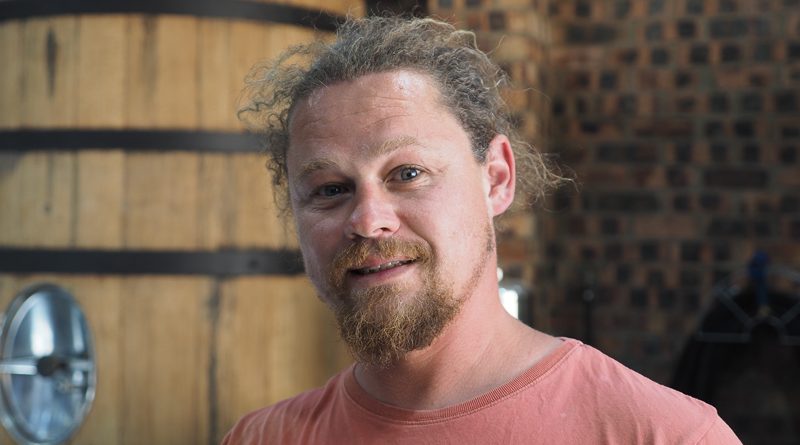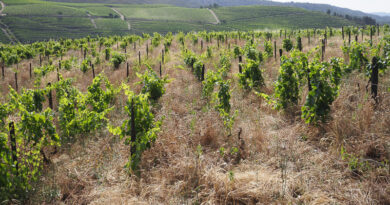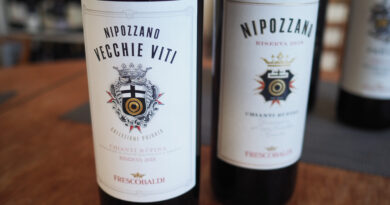Johan Meyer and his new home in the Swartland – some of South Africa’s top natural wines
Johan Meyer, known affectionately by everyone as Stompie, is one of the leading natural winegrowers in South Africa. He’s been making his own wines since 2008 as a side gig, and since 2015 he’s been full time on his JH Meyer wines, as well as making Mother Rock and Force Celeste wines in a partnership with Indigo Wine in the UK. Now he’s bought a property and has planted vineyards – an exciting development. Ring and I visited this new farm, Platteklip, on a beautiful November afternoon to find out more.
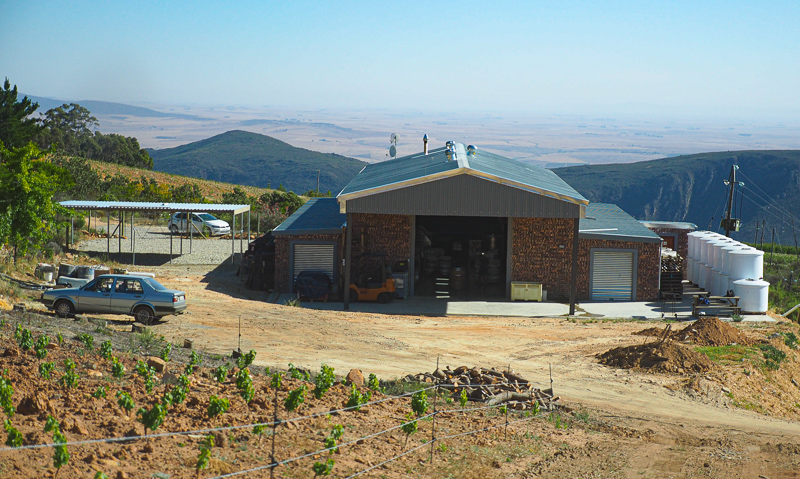
‘2008 was a good time to start as a new producer in the Swartland,’ says Stompie. ‘I think it’s more challenging now for a young guy to start and try and get into the market.’ It is becoming harder to source good grapes. ‘This is the reason we brought a property: to get something sustainable. I have all these brands, but I’ve lost about four vineyards in the last two years.’ Elgin has been a particular problem with vineyards being removed in favour of apples. ‘I can’t pay R30 000 a ton,’ he says, ‘and they can’t afford less, so they plant apples.’ Also, the bigger buyers with more money and power are taking some vineyards. He lost a Grenache vineyard because the farmer needed a commitment to a higher price and bigger volume. ‘It’s a pity, but what can you do about it? The only thing you can do is buy land and plant yourself.’
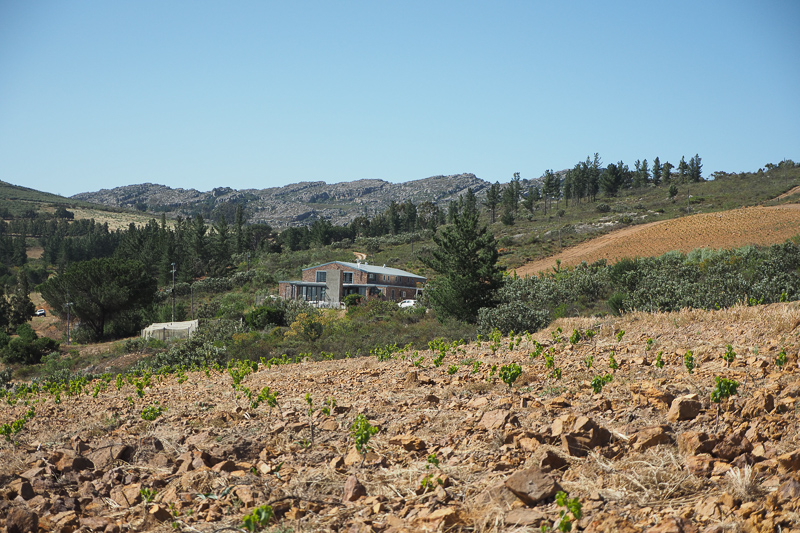
So he’s doing it, Craig and Carla Hawkins are doing it, and who else? ‘There are people looking, but to buy land is super difficult,’ he says. ‘I was lucky to buy this land. I was looking for this for two years, then it came onto the market and I was onto it quite quickly. I bought it as a cash deal. There is not a lot of property available.’
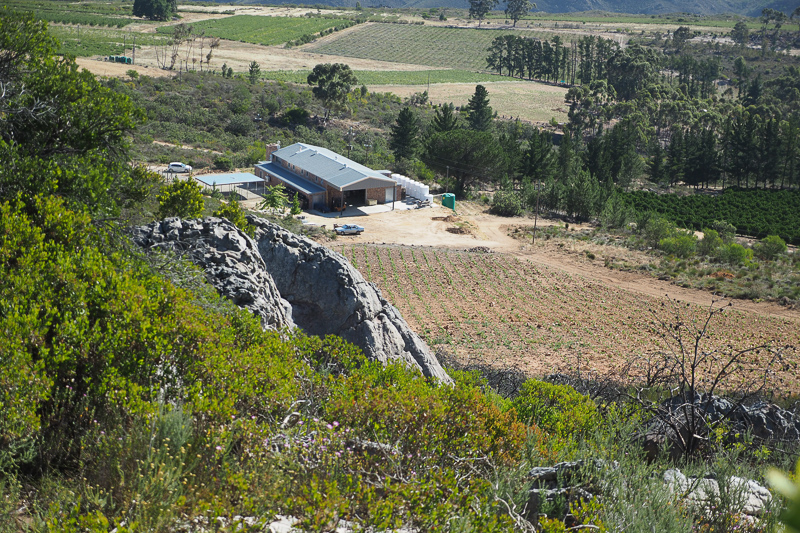
Getting finance is difficult in South Africa. ‘Unfortunately in our country when it comes to wine, the banks are not really open to it.’ Stompie has done everything with cash, without any loans. ‘I owe nothing. It’s a nice feeling, but it’s difficult. We build ourselves, we plant ourselves. We did everything with a lot of blood, sweat and tears.’
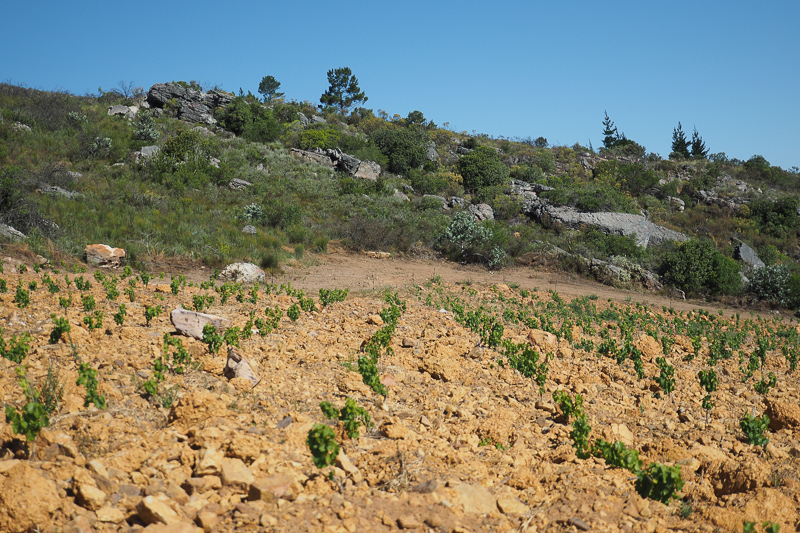
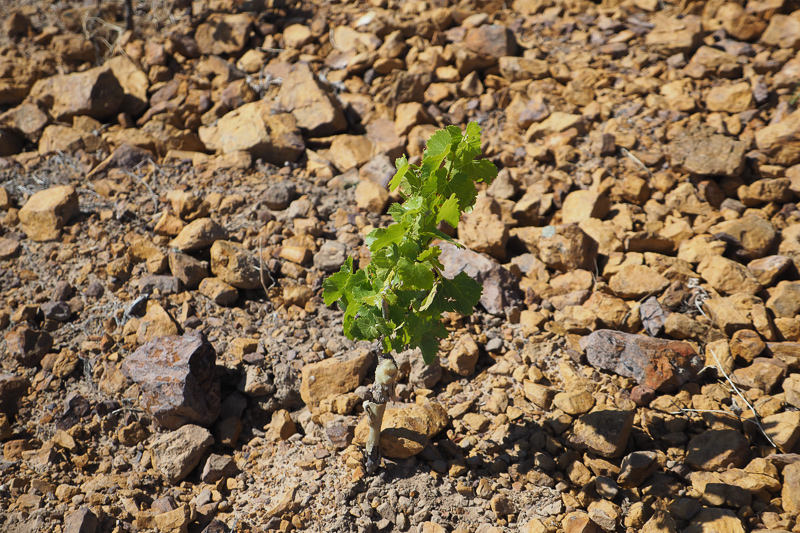
Stompie moved into the new cellar at Platteklip, which translates to ‘flat rock’, and is still in the process of moving equipment over. ‘It was quite a job because there was nothing,’ he says. ‘We did quite a bit of work over the last 14 months, building and breaking down, and planting vineyards and trying to keep the animals out of the vineyards. It was hectic.’
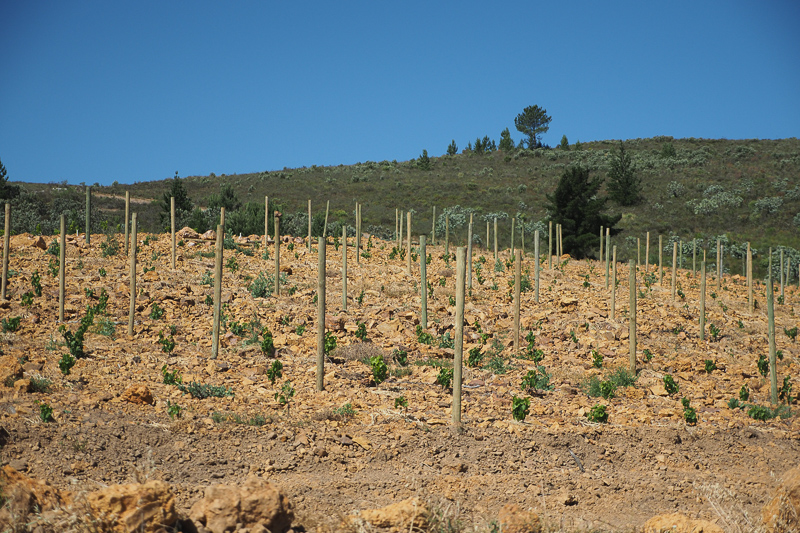
He bought the property in 2016, and spent quite a bit of time researching the soils and deciding how to plant. He put up a weather station and researched climate. This was needed, because it isn’t normal to plant Pinot Noir and Chardonnay in the heart of the Swartland. Though, to be fair, this is not typical Swartland.
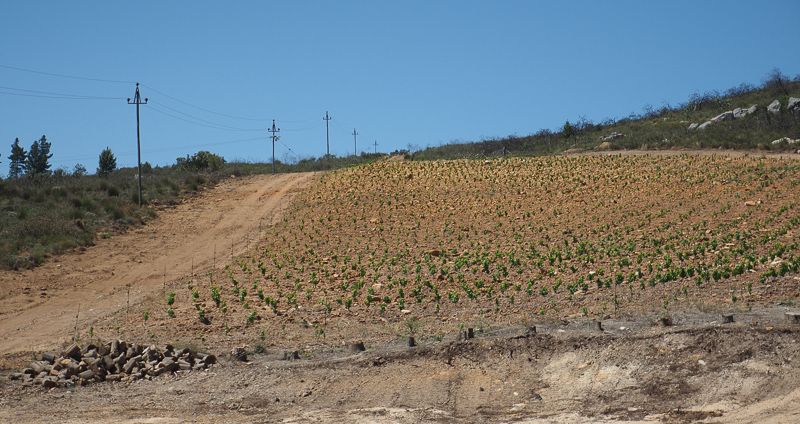
‘It’s called Swartland at the moment,’ says Johann, ‘but I’m busy with SAWIS at the moment [the government body overseeing vineyards] to subdivide it, to create a new wine of origin, because the climate is so different.’ Normally it is around 6-8 degrees cooler here than where most of the vineyards of the Swartland are. It also has higher rainfall. ‘We are about 650 m here.’ How can you create a new WO? ‘It is like going to court: you need a good statement, and say this is the reason I want a new sub-appellation. The main thing is climate. I have been gathering information on this farm for four years now. Soil is a factor too.’ He’s just handed the application in for the new WO called Picketbooberg, which means the top of the Picket mountain.
The reason for looking for a new WO is that people will raise their eyebrows when they see Pinot Noir, Sauvignon Blanc, and Chardonnay labelled as Swartland WO.
The conclusion from all the soil and climate research was that the best-suited variety for here was Sauvignon Blanc. ‘I said, I have about 15 hectares I can plant. I’m willing to offer half a hectare for Sauvignon Blanc.’ So he planted Sauvignon at 5000 vines/hectare. ‘We’ll see how it turns out.’ This is the coolest part of the vineyard, facing south, next to the winery. The whole property is 32 hectares. Some of it isn’t plantable, so there’s lots of natural vegetation, including rare fynbos species. The vineyards are being planted in virgin soil, and they’re the only vines on the mountain. ‘It’s a nice feeling to work from scratch with clean soils,’ says Stompie.
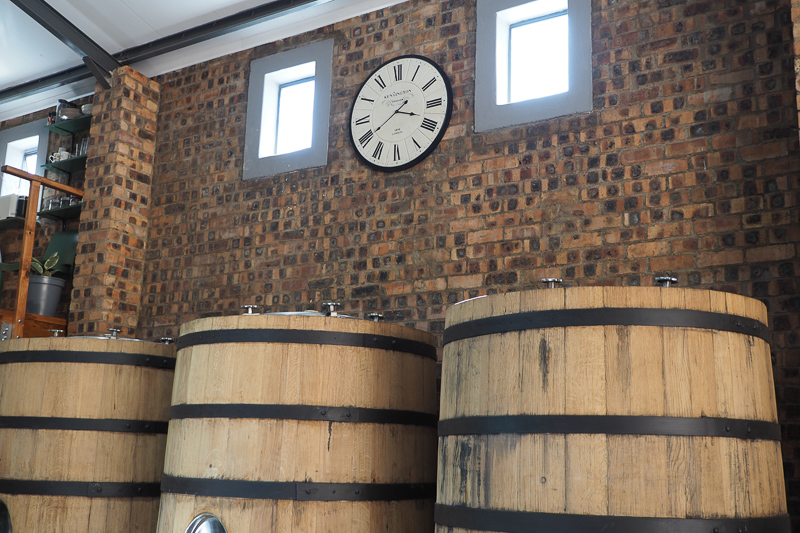
The vineyard is about 30 km from the ocean (the west coast), and on a clear day you can see the tankers at sea. Every afternoon an ocean breeze comes through the vineyard, and this helps cool things down, as well as lessening disease pressure. There’s also a good diurnal temperature fluctuation, from 30 C to 12 C at night.
The vineyard is all in development at the moment, and planting is still ongoing.
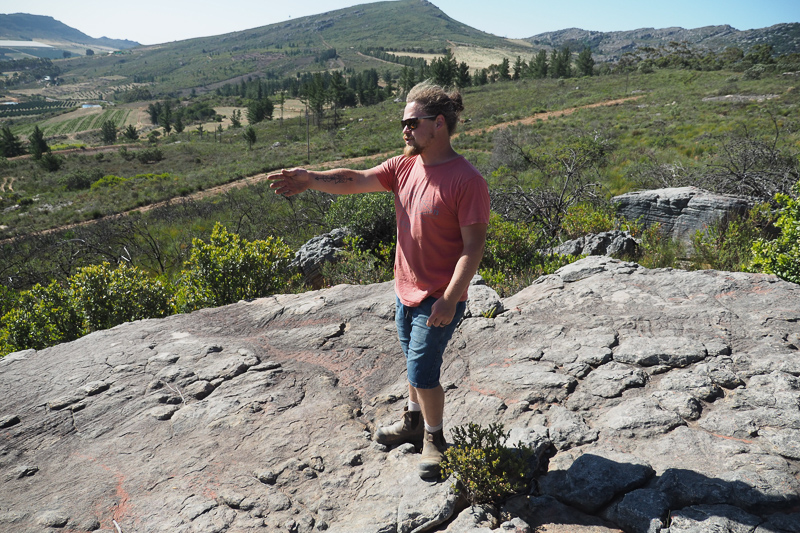
He’s talking to his neighbours to see if they will plant for him. ‘I have two guys who are willing to go for 15 hectares,’ he says. This would cover the needs of the Force Celeste brand he makes in collaboration with Indigo Wines (his UK importer), which he currently buys grapes for. Force Celeste used to, until last vintage, be Force Majeure, but they ran into problems because there’s a Washington State winery with that name.
Does Grenache have a good future potential in the Swartland? ‘Yes, but up here, even more, with the Table Mountain sandstone soils and a little bit of altitude. Grenache grows well at altitude, in my opinion. The Swartland has great soils for Grenache, but we just need a bit of height, and this is as high as you can get in the Swartland. If we look at the drought, Grenache and Mourvèdre were the two varieties that thrived.’ The yields for these varieties weren’t down as much for Syrah. ‘They love the heat.’
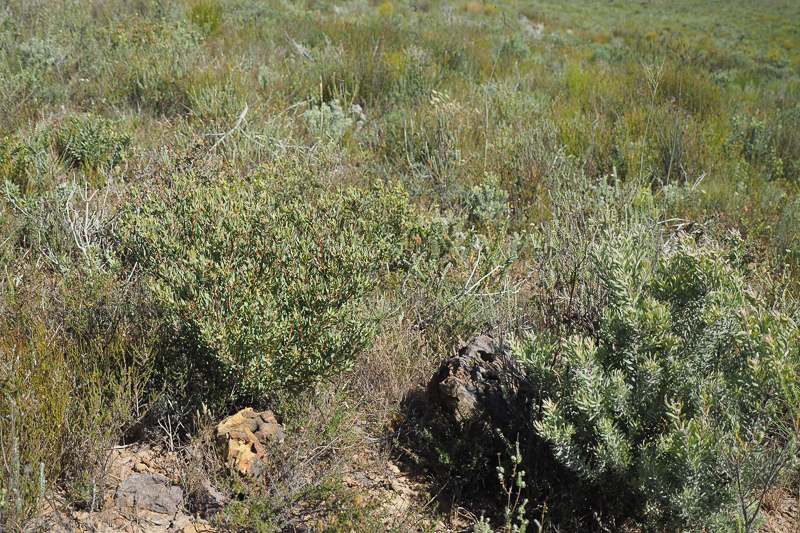
‘When you look at planting vineyards you look at cold units during the year,’ says Stompie. ‘The main area they use this is actually in fruit planting. If you want to plant an apple tree, you need at least a minimum of 800 cold units. If there are apples, then I can plant Pinot Noir and Chardonnay. They need the same kind of cold units. To give an example, Hamilton Russell in Hemel-en-Aarde, gets 780-820 cold units per year. I get 1100 per year. My average daytime temperature here is 2 C colder than Hamilton Russell. Altitude is responsible: for every 100 m in altitude you drop 1 C. The highest vineyard here is 820 m.’
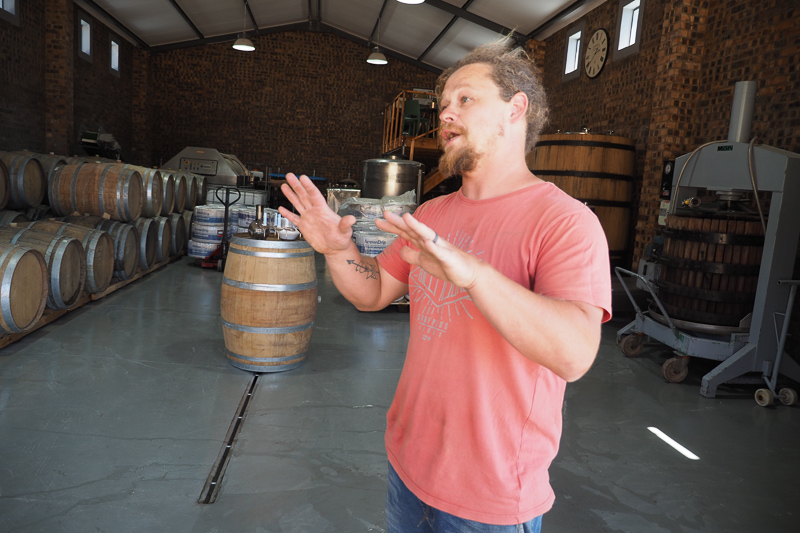
All his wines are whole bunch, either pressed or fermented. He doesn’t own a destemmer. ‘Maybe I’m lazy, because it’s a mission to clean them,’ he says, joking. The previous cellar was in Hermon, and he rented it for four years. Now Ryan Mostert and Sam Suddons are moving in there with their Silwervis, Smiley and Terracura wines.
Sulfite use is low, with many wines not getting any additions. ‘I’ve shipped lots of wines around the world without sulphite additions, and without problems,’ says Stompie. ‘If you work correctly in the vineyards with low pH, it works.’ He adds that if you want to stabilize wines naturally, it takes time.
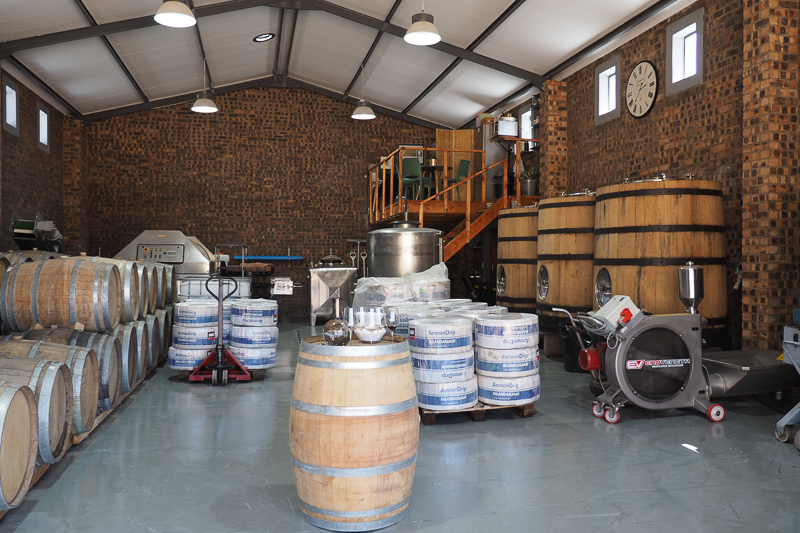
THE WINES
Mother Rock Force Celeste Chenin Blanc 2019 Swartland, South Africa
12% alcohol. Organically farmed, no added sulphites. 20% skin contact. This is what used to be called Force Majeure, but the name had to be changed because of a trademark claim. This is cloudy, and has bright zippy flavours. Expressive with a savoury edge to the bright citrus and apple fruit. 91/100 (JG)
There was an American company that had rights to the name Force Majeure, so for 2019 vintage they changed the name to Force Celeste. Otherwise, the label remains the same. This range been a very successful one. Organic, native fermented, with no additional sulphur, this Chenin was 20% skin fermented over 2 weeks, and comes from Paardeberg’s deep sandy granite soils (planted in 1984/86). It remained on full lees for 8 months prior to bottling. Pouring slightly cloudy, this is tightened with grapefruit pith, and wild citrus, with a juicy palate bedded with light lees. Lively. 91/100 (TR)
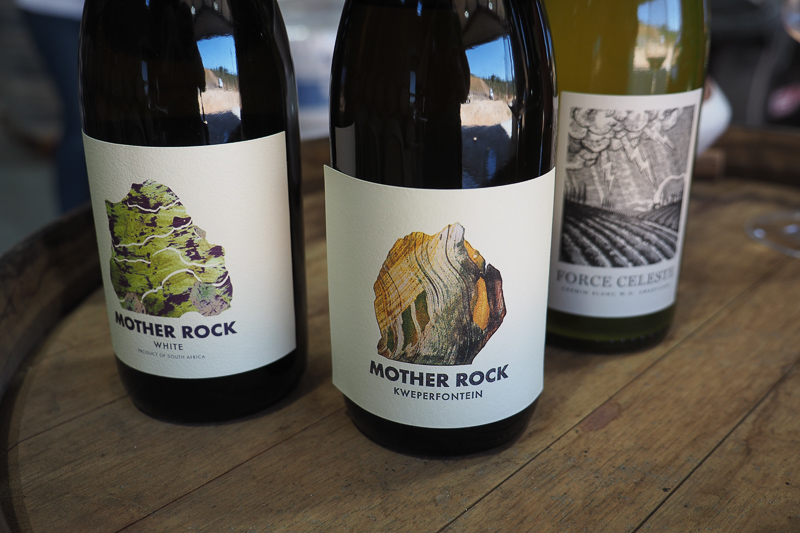
Mother Rock Kwepperfontein 2018 Swartland South Africa
Chenin Blanc fermented in concrete, spends 14-16 months on gross lees. Bottled out of the concrete egg. No added sulphites. This is very stylish with an appley edge to the savoury, spicy, mealy citrus and pear fruit. Has a grainy core. Structured, with lots of flavour. Edgy and natural with a bit of lift. 92/100 (JG)
From the same 350m Paardeberg vineyard as Force Celeste, this Chenin was planted in 1984 planted, and was native fermented in concrete, where it remained for 8 months without moving or sulphur, prior to bottling. Pours an attractive lovely golden hue, streaming tight quince, light honey, golden apple, with layers of tight spicing, and a dried apple finish. 92/100 (TR)
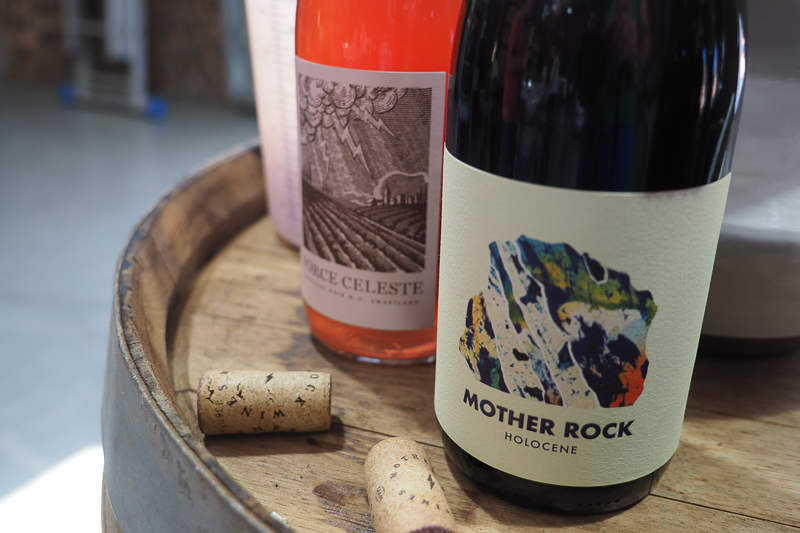
Mother Rock White 2018 Swartland, South Africa
This is a blend of Chenin, Semillon and Grenache Blanc. No added sulphites. He only believes in organic farming so he dropped the Harslevelu he was using this year. Smoky pear and apple nose. Mealy and grainy with lively spiciness. Has a savoury core with nice intensity. 93/100 (JG)
Chenin, Viognier, Semillon, and Grenache Blanc were sourced from 4 different vineyards, each typifying the 4 main soil types of the Swartland Harslevelu used to go into the mix, but it lost its organic farming, so Stompie dropped it, and is planting a new plot anew. All were pressed to barrels, then racked to large concrete tanks for a 16 months’ rest prior to racking off lees to bottle. There’s a lovely perfumed pear skin and quince note, with a grip of tight tannins riffing along the sides. Tight, nervy pear drives this to a lightly spiced, slightly warm finish. Nice structure and weight. 91/100 (TR)
Mother Rock Force Celeste Grenache 2019 Swartland, South Africa
This was just 8 h on skins. ‘I tried to make a rosé and forgot about it,’ says Stompie. From granitic soils, pressed off into 500 litre barrels, then bottled six months later without sulphite additions. Full orange pink in colour, and slightly cloudy. Grainy and supple with red cherries and spice. Nice lively spiciness with a bit of acid lift. There’s a lovely citrussy edge to the cherry fruit with good precision. 92/100 (JG)
He tried to make a rosé, but forgot about it so the colour depended to this attractive cloudy and glowing deep peach, so Stompie called it Grenache instead of rosé. It spent just 8 hours on skins, then moved into 500L barrels for 6 months. He thinks Grenache has incredible potential in the Swartland, and even more at his high altitude site. Summer strawberry, fresh rhubarb, wild roses fill juicy palate, finishing with alluring herbal salts. Very complete and smashable. 92/100 (TR)
Mother Rock Holocene 2018 Swartland, South Africa
Three varieties, three soils: this is 50% Carignan (granite), 25% Mourvedre (clay) and 25% Cinsault (koffieklip). (JG)
This was 3 grapes (50% Carignan, 25% Mourvèdre, 25% Cinsault), from 3 vineyards, and from 3 soil types (clay, granite, koffeklip). It was all whole cluster, crushed by feet and fermented over 12 weeks before being basket pressed into old barrel for 1 year, then blended, then bottled. ‘I don’t own a destemmer’, so all his reds are entirely whole cluster. Lovely fynbos herbaceousness, with light pitch, and pine notes, with finely grippy, sticky, but tightly structured tannins. Fresh, and wild. 93/100 (TR)
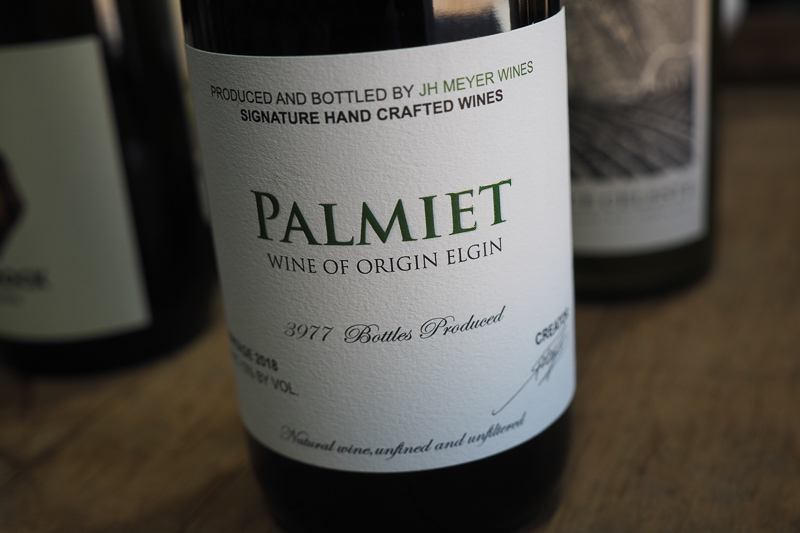
JH Meyer Palmiet Chardonnay 2018 Elgin, South Africa
Organic since 2002. Picked quite late, 13% alcohol. 16 months on gross lees in 500 litre barrels, with pH 3.16 and no added sulphites. Mealy, spicy and powerful with some lift. Has an appley edge to the citrus fruit with some marmalade notes. Lovely texture to this wine with some pineapple and oatmeal. 93/100 (JG)
This Chardonnay, organically farmed since 2012, is picked later than most Elgin Chardy. It was native fermented in 500L barrels (20% new), where it remained for 16 months, and was bottled with no sulphur (pH 3.16). Deeper yellow in hue, this opens with a creamy, lightly perfumed lemon, light wax / lanolin note. Quince, pear skin runs tight and nervy on the palate, finishing with a delicate elderflower fragrance. Beauty. 93/100 (TR)
Mother Rock Red 2018 Swartland, South Africa
This is 50% Carignan from granite, 25% Cinsault from koffieklip and 25% Mourvèdre from clay. 12 weeks on skins then ages in 500 litre barrels. Ginger, spice and red fruits on the nose. Vibrant and juicy with a hint of mint. Nice fresh acid here: a bit edgy, but also supple and delicious. Stony, savoury finish. 93/100 (JG)
JH Meyer Palmiet Pinot Noir 2018 Elgin, South Africa
115 clone, whole bunch, 500 litre oak (10% new), no added sulphites. This has a complex black fruits nose with some spice and some reductive characters. Textured with some cherry and spice, and lively acidity. Grippy. There’s a slight hint of mouse right now: this wine needs time to resolve. 90/100 (potentially higher score later?) (JG)
This Elgin 115 clone Pinot Noir came from a 19 year old vineyard planted on Bookerveld soils at 300m. Whole bunch and native fermented into 500L barrels (10-20% new), this remained there for 18 months prior to bottling, with no sulphur. Gentle forest floor, wild raspberry, rhubarb, light mustard seed, along tight, long tannins, finishing with a pink peppercorn note. 90/100 (TR)
JH Meyer Elandsrivier Pinot Noir 2018 Elandskloof, South Africa
115 clone on sandstone at 750 m. Brooding sweet cherry fruit nose is floral and fine. Elegant, juicy palate with fine-grained structure. Black cherries and spices – lovely purity. Silky and fine, but – once again – this needs a bit of time. 94/100 (JG)
From Elandskloof and 700m altitude, this 115 Dijon clone comes from a 17 year old vineyard, and was vinified the same as the Palmiet Pinot Noir (whole bunch and native fermented into 500L barrels (10-20% new) where it remained for 18 months). Brick hued, with some red earth and espresso bedding downy cherry, raspberry, and dusky plum. Bigger, grippier tannins, are still fine and long, finishing with distinct herbaceousness. Very much in youth, with much time ahead. 91/100 (TR)
JH Meyer Pinot Noir Cuvée NOS 2019 Western Cape, South Africa
This is a blend of three regions, released early as a no added sulphites wine (but in the end the other wines were no added sulphites too). Lovely black cherries and spices. Fine-grained with some earthy hints. Seamless with silky black fruits. 94/100 (JG)
This barrel selection blends three regions, and was released as a no sulphite wine (though the rest ended up being so also). Wild and earthy, with raspberry, blackberry, thorns, and dusky plum, threaded with ample herbaceousness, and wild scrubby herbs. 90/100 (TR)
Force Celeste Cuvée Pinot Noir 2018 Swartland, South Africa
This is a pet nat. The Pinot Noir was pressed to barrel and then racked every day for five days and bottled at 20-24 g/l residual sugar. The fermentation in bottle ended up stopping and starting and this was eventually 6 g/l. Pale pink in colour, this is juicy, bright and vivid with a bit of grip and nice juicy fruit. Really fine. 91/100 (JG)
This fun, juicy pét-nat is a blend of Pinotage and Colombard, with 1 year on lees, finishing at 6 g/L RS. Pouring a cloudy light strawberry orange hue, this carries earthy orange, raspberry, rhubarb with a swing of tart, crunchy cranberry acidity. Super juicy. 90/100 (TR)
UK agent: Indigo Wines
Find these wines with wine-searcher.com

